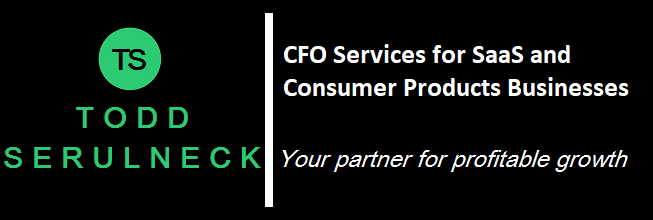Raising Capital Checklist

Raising capital is one of the four most stressful events for a growing business.
Once a business has committed to a capital raise, there is a significant investment of time and resources. There is also risk should the raise be unsuccessful or occur for less than desirable terms. I am happy to provide this handy checklist to help alleviate some of the unknowns. This list is not exhaustive, but will get you headed in the right direction.
The Capital Raise Checklist
- Timing: A capital raise can often take six to twelve months. The fastest capital raises can be done in three months, but our stars must be aligned. Difficult capital raises may take more than a year. If timing is an issue, seek out other forms of financing to carry the business while the capital raise is underway.
- Advisors: Build a board of advisors for the company if one does not already exist. Advisors will be an invaluable source of information, connections, and assistance. They also lend credibility to your company as you go through this process. Do not take these selections lightly as the fate of the business may depend on the counsel. The first two selections should be a corporate attorney and a CFO (me!) — let’s formally engage these two. We should also think about technical skill sets that are critical for the business to succeed where we may not be as experienced. Possible competencies to seek out in advisors: sales, marketing, operations, and product development. Let’s also seek out industry experience specific to your business or future customers.
- Gain clarity on business strategy: There is nothing wrong with pivoting a business when things don’t go according to plan, but shifting our business around during a capital raise can cause confusion, version control issues, and degrade investor confidence. I can be very helpful in avoiding potential stumbling blocks.
- Calculate Total Addressable Market (TAM) and projected Share of Market (SOM): Sometimes this is hard to arrive at, but it is important to tell investors how much upside we have. It is also important because this is an important input into our capital raise strategy. If the TAM is small and limits our options to raise capital, it is best to figure that out sooner than later; perhaps alternatives like a CDFI loan, SBA loan, and other forms of finance will make more sense.
- Get the books in order: Amature accounting does not build confidence with investors. We can help with this. I recommend at least 3 years of historical financials if possible: balance sheet, income statement, and cash flow. Review the chart of accounts and simplify or reorganize if the financials don’t help investors understand the business.
- Start building the financial model: I like to build a three to five year projection of the income statement, balance sheet, and cash flow. The number of years of projection is largely determined by what we are trying to show investors — likely a situation in which they can exit the business and achieve their desired return on investment. We may also want to show future milestones such as the next round of capital to be raised, an MRR goal, positive cash flow, or achieving profitability. I will align the financial model and historical financials to be on the same chart of accounts so the historical data can sit inside the financial model. Your work on the financial model will continue throughout the process. There will likely be future revisions. Make sure it includes a “use of funds”, clearly shows how much capital is needed, shows how long the capital will last, and suggests how the investor will get his/her desired return of capital.
- Figure out the capital raise strategy: What kind of round is this? How much money needs to be raised? At what valuation? What type of investment will be made? What type of investor will we be seeking out? How will we find them and make contact? Are we crowd-sourcing? Will we be using the services of a broker/dealer (a.k.a. investment banker)? What does our timeline look like? When will we need to raise again? Any contingency plans? Also, get comfortable with valuations and deal terms — see the resources section below.
- Put together the intellectual property strategy: How will we safe guard your intellectual property through the capital raise process and beyond? If we decide to, register trademarks, file for patents, and prepare a non-disclosure agreement (NDA). Some companies prefer not to file patents as they are concerned about patent trolls. Will we have an NDA and if so, at what point in conversations will it be requested? Which investors will sign an NDA? Which ones will not be required to?
- Build the presentations: This will be a collaboration between yourself, the CFO (yours truly), and our sales and marketing leads. Often the CMO is the best author. Do not lie or misrepresent the business opportunity. Agree on the formats and outline ahead of time. Our capital raise strategy will determine the format of the presentation. Regardless of the format, we will be making revisions and some alternate versions. Thus, plan on some type of version control and method of keeping track of who was sent what. Some formats you may prepare, depending on your capital raise strategy:
- One-page/two-page teaser: This one or two page colorful PDF is designed to get an investor’s attention fast. It has some detail, so they know you have something interesting, but won’t answer in the detail of your main presentation. You may or may not want to include sensitive information – depending on how much control you plan to have over the distribution of this document.
- Short deck: This is a 5 to 7 page powerpoint or PDF. This can be used for short (five to ten minute) investor conversations. It will also serve well if we are early stage and decide to enter pitch competitions.
- Long deck: This is a 20 to 25 page powerpoint or PDF. This is for more serious investor conversations (1 hour).
- Demo: If our product is something that we can show and tell, let’s prepare a demo. If the product is not ready, can we demo a mock-up? Sometimes I get concerned about technical difficulties during a live-demo, thus I recommend a video as well.
- Prepare for due diligence: I’m happy to send you a due diligence checklist. Establish a data room and start populating it. Keep it organized in folders. Include a “table of contents” document. We will want to be ready for the due diligence as soon as a term sheet or LOI shows up. Don’t wait. Let’s get started now. Don’t misrepresent – we always maintain our integrity. Complete the data room as you reach out to investors; expect to add to the dataroom based on specific potential investor requests.
- Put together the list of investors to contact. Reach out per the capital raise strategy. Try to get feedback on our presentations… revise… revise… and interate. Make good use of the board of advisors – not all the feedback from our potential investors should be incorporated into the next version of the presentation.
- Do some due diligence on investors that respond. The due diligence process is a two-way street. Having the wrong investors can be worse than having no investors at all.
- Do not stop with the first investor: Due diligence can drag out and investors often never commit. Keep going until the job is done.
Resources and Links:
Valuing Pre-revenue Companies

Entrepreneurs and investors must both understand the critical aspects of valuation for pre-revenue and startup entrepreneurial ventures. By aligning expectations, such understanding …
Source: A series of articles originally published on the eVenturing.org website. Lipper, G., Payne, W., and Villalobos, L. 2007. www.angelcapitalassociation.org/data/Documents/Resources/AngelCapitalEducation/ACEF_-_Valuing_Pre-revenue_Companies.pdf

 Next Post
Next Post



